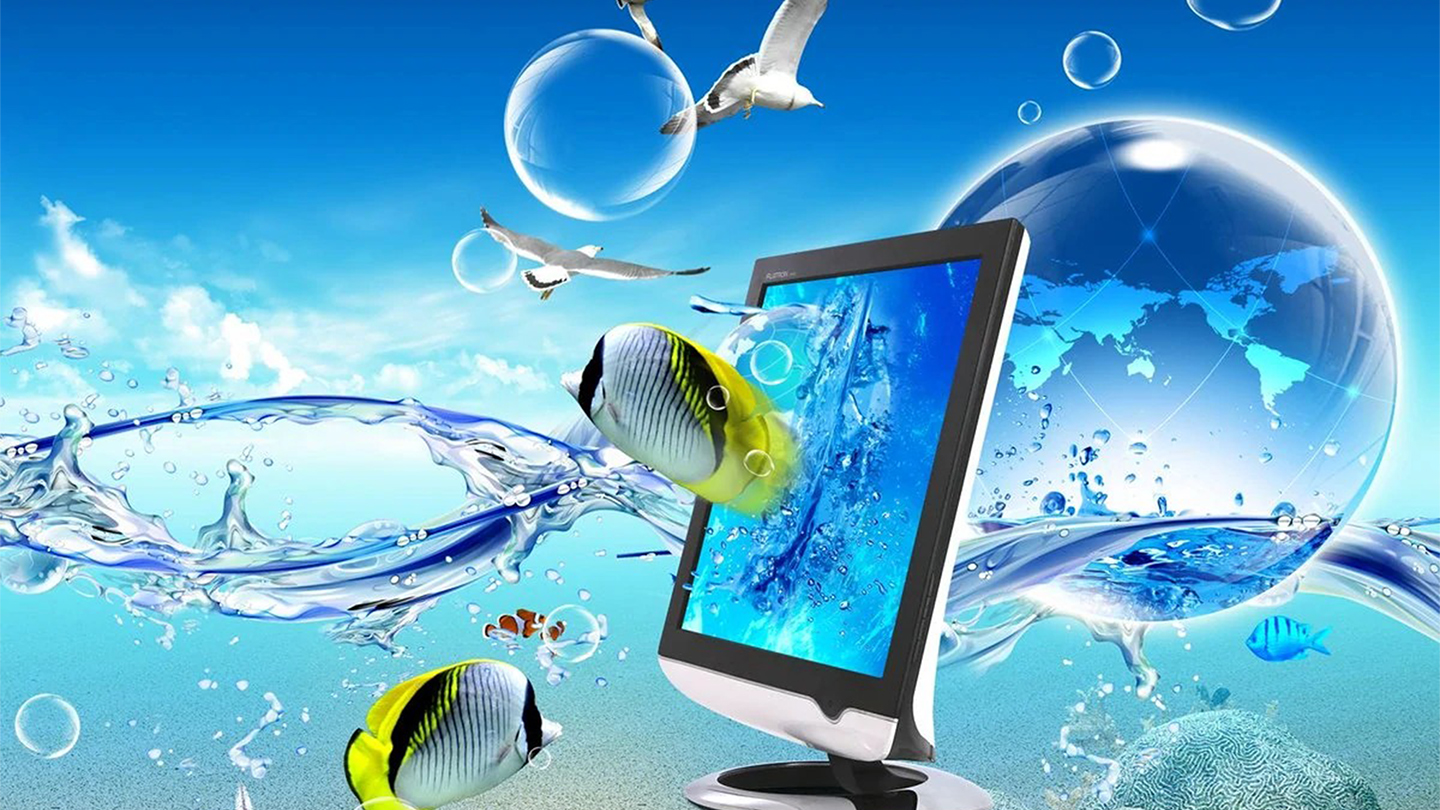Frutiger Aero is part of the latest cohort of niche aesthetics to rise up through the ranks of online obscurity. The internet is always pumping out new-ish, niche aesthetics (and rediscovering old ones anew), from indie sleaze to ‘corecore’, and Frutiger Aero is, at first glance at least, just one of many emerging “cores” and “Girls” you’re likely to find gridded on Pinterest, hashtagged on TikTok, and marketed on Instagram.
Only time will tell if Frutiger Aero has a broad enough appeal to be re-categorised as a capital-T ‘trending” aesthetic, in amongst the internet’s mass of fleeting cores. But its revival is growing — Google Trends shows that search interest spiked this past December and aesthetics libraries across the internet have updated Frutiger Aero’s pages to mark its TikTok resurgence (the hashtag currently has around 25 million views). On Reddit, people are discussing whether it’s capable of eclipsing the popularity of Y2K.
For those who have yet to uncover it, Frutiger Aero is named after Windows Aero, the UI theme of Windows Vista, and Adrian Frutiger, whose namesake font was popular with computer interfaces and other corporate materials of the time. Thus, Frutiger Aero, as defined by the Consumer Aesthetics Research Institute, is the name given to the corporate tech aesthetic of the years between 2005 and 2013. In other words, it’s how companies like Microsoft design the worlds within computer screens and cellphones to look: cool blues, calm greens, airy swooshes, leaves, bubbles, and water droplets. Think of the glass window borders of Windows Vista or your choice of macro shots of flower petals or dewy blades of grass for user avatars. Sonically, Frutiger Aero is the Windows startup chime, Nintendo Wii themes, and Android bings.
As Reddit suggests, Frutiger Aero is best described as Y2K’s successor. If Y2K was visually defined by the futuristic chaos of the Year 2000 Problem and the hacktivist optimism depicted in films like Hackers (1999), then Frutiger Aero is the corporate response that aims to reassure people that their technological products are trustworthy. The aesthetic’s use of natural imagery, clean lines, and calming colours can be seen as a corporate attempt to present its products as reliable, non-threatening and efficient tools. Its use of macro-shots and transparent elements like water splashes, droplets, and bubbles was meant to show off the shiny new hardware’s ability to display high-resolution imagery. In the comment section of a recently–uploaded Frutiger Aero YouTube playlist, the creator promoted it as a “hopeful internet era 💾 a future we dreamt of but never happened”.
Today’s revivalists look back on this with nostalgia — this is what the virtual world looked like when we were first introduced to life online in computer science class at school. The Frutiger Aero revival is strongest on TikTok and YouTube, where video moodboards define and expand on the aesthetic’s visual and sonic canons. The playlists aren’t as much literal representations of what life online in the mid-aughts sounded like, but more so interpretations of how they make contemporary computer users feel. The YouTube playlists all seem to curate the same dozen or so contemporary songs, thus expanding the scope of what Frutiger Aero can come to represent. However, this cocktail of old imagery and new sound turns Frutiger Aero into a means of remembering a once ineffable past. As one YouTube commenter puts it: “When I was a child back in the 2000s, I always had some uncanny vibes from all this aesthetic which was literally everywhere… Now, of course, I feel some nostalgia for this aesthetic, but it still confuses me like no other aesthetic…”.
Since the internet culture boom of 2020 (when we all became, by necessity, Very Online), no collection of visual artefacts has been spared the forced baptism of becoming an ‘aesthetic’. It’s easy to dismiss some of these as cultural sludge: empty nomenclatures that clog up trend cycles and culture pipelines. We’ve established that there are too many of them to count, too many for any single one to matter, and too many too fast. But micro-trends like Frutiger Aero are a prime example of how aesthetics can help us articulate thoughts and work on ideas in ways few other tools can.
Both back in 2005 and now in 2023, Frutiger Aero thrives at the tense juncture between technological utopia and dystopia. Today’s Frutiger Aero has been wrested from the corporate hands that birthed it in 2005 and can now be a tool for imagining a different world. It embraces a techno nostalgia that challenges the breakneck “progress” of technology, favouring recycled hardware and advocating slower consumption. Its appropriation of generic corporate images of dew on leaves or fish splashing through water could encourage us to view nature and technology as intrinsically linked, rather than at odds. Frutiger Aero can become an aesthetic that imagines a more amicable relationship with technology, where technology is an extension of the natural world bridged through the liminal spaces of the mind. It can imagine techno-dependence as something that can actually bring us closer to nature in a bond of mutual protection.
An aesthetic’s value comes from its ability to retool the imagination. We need not burden every single emerging aesthetic with the task of representing the totality of our times. In fact, this pattern of naming, discovering, and rediscovering might let us work on ideas through longer periods of time. Like the futuristic utopian cityscape of “The World If” meme, the visuals and playlists of Frutiger Aero project us into a possible future. Through these projections we can start to work through the ‘what ifs’ and ‘maybes’ we might want to move towards — both as individuals dealing with draining screen time or as a society struggling against its strained relationship with technology.


